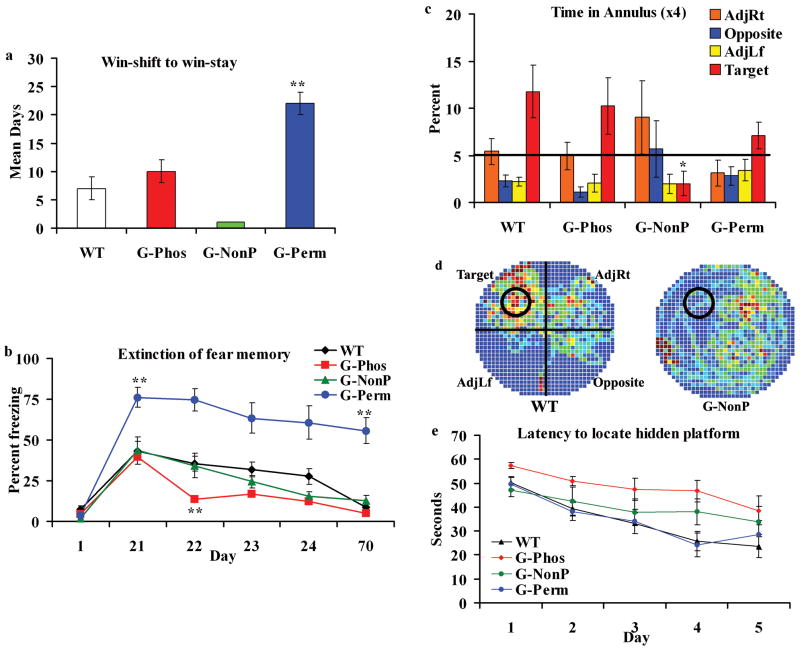Figure 1.
Protein kinase C site-specific differential performance on 3 behavioral tasks of 3 transgenic mouse lines overexpressing wild type, permanently phosphorylated or unphosphorylatable forms of the growth protein GAP-43. A. Radial arm maze win-stay task. Time in days required to unlearn win-shift and return to chance performance (see Text). The WTs and G-Phos performed at chance levels in 7–10 days whereas G-Perm animals required 22 days (**, p < 0.01). The chance performance in the G-NonP group 1 day after terminating the win-shift task indicates poor win-shift abilities. B. Contextual fear conditioning. Both the G-Phos and WT groups showed similar freezing levels during the first retention test (Day 21) but the G-Phos group showed less freezing on the second extinction test (Day 22) compared to WT (** p < 0.01). In contrast, the G-Perm group showed high levels of freezing 1) on the 21 day retention test (**, p < 0.01 vs. all groups) and 2) at 70 days after initial fear conditioning that was significantly greater than all groups (**, p < 0.01). C – E. Morris water maze. Spatial abilities tested in the 3 lines revealed a deficit in retention, but not performance, for the G-NonP group. During a probe test, G-NonP mice did not search selectively in the target area where the platform had been located during training. This is shown both in the percent time spent searching in each of the 4 annuli during the 60 s test (C) and the occupancy plot (D). E. The poor retention for the hidden platform was not due to poor initial acquisition measured as latency to locate the platform (in seconds).

